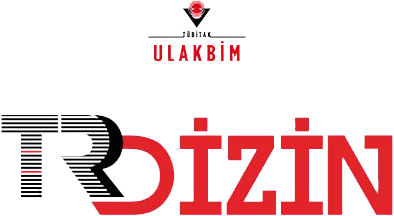
Bu eser Creative Commons Alıntı-GayriTicari-Türetilemez 4.0 Uluslararası Lisansı ile lisanslanmıştır.













The effect of prognostic nutrition index (PNI) rates on the development of surgical site infection after abdominal surgery
Hakan BALBALOĞLUBulent Ecevit University, Faculty Of Medicine, Department Of General Surgery, Zonguldak/turkeyINTRODUCTION: Surgical site infection (SSI) is one of the common healthcare-associated infections. Progressive nutritional index (PNI), one of the risk factors for SSI, is a simple but useful method for nutritional assessment. The aim of this study is to investigate the rates of PNI in patients who have undergone abdominal surgery and the role of these rates in predicting the development of SSI.
METHODS: A total of 514 patients who underwent abdominal surgery between 2014 and 2021 were included in the study by retrospective review of hospital records. The formula (PNI= 10 × serum albumin (g/dl) + 0.005 × total lymphocyte count (mm3) was used to calculate preoperative PNI. PNI rates were compared in patients with and without SSI.
RESULTS: SSI was detected in 267 of the 514 patients included in the study (case group: 267, control group: 247). The median age of the patients was 64 (min: 20 max: 93) years, 222 (43.2%) were female and 292 (56.8%) were male. The median time to SSI was 13 days (min: 6-max: 30). PNI the group in which SSI was detected was 32 (min: 27-max: 37), 36 (min: 32-max: 41) in the control group. There was a statistically significant difference between the two groups (p<0.000). In patients with SSI, Enterococcus spp. were detected in 87 (32.7%), E. coli in 71 (26.3%), coagulase (-) methicillin resistant Staphylococcus aureus in 34 (12.8%) patients, 18 (6.8%) in Klebsiella pneumoniae, Candida spp. in 16 (6%), Acinetobacter spp. in 15 (5.6%), Pseudomonas spp. in 8 (3%), Enterobacter aerogenes in 8 (3%) coagulase (+) methicillin sensitive Staphylococcus aureus in 5 (1.9%), Proteus mirabilis in 3 (1.1%) and Bacillus spp. in 2 (0.8%).
DISCUSSION AND CONCLUSION: It has been found that patients with low PNI values in the preoperative period are at higher risk for the development of SSI. PNI levels can be used for close monitoring and early detection of patients who will develop SSI.
Prognostik nütrisyon indeksi (PNİ) oranlarının batın operasyonu sonrası cerrahi alan enfeksiyonu gelişimi üzerine etkisi
Hakan BALBALOĞLUBülent Ecevit Üniversitesi, Tıp Fakültesi, Genel Cerrahi Ana Bilim Dalı, ZonguldakGİRİŞ ve AMAÇ: Cerrahi alan enfeksiyonu (CAE) yaygın sağlık hizmeti ilişkili enfeksiyonlarından biridir. CAE risk faktörlerinden biri olan progresif nütrisyonel indeks (PNİ), beslenme değerlendirmesi için basit ama faydalı bir yöntemdir. Bu çalışmanın amacı batın cerrahisi geçirmiş hastalarda PNİ oranlarını ve bu oranların CAE gelişimini tahmin etmedeki yerini araştırmaktır.
YÖNTEM ve GEREÇLER: Çalışmaya 2014-2021 yılları arasındaki hastane kayıtları taranarak batın cerrahisi geçiren toplam 514 hasta dahil edilmiştir. Preoperatif PNİ hesaplamasında (PNİ= 10 × serum albümini (g/dl) + 0,005 × toplam lenfosit sayısı (mm3) formülü kullanılmıştır. CAE tespit edilmiş ve edilmemiş hastalarda PNİ oranları karşılaştırılmıştır.
BULGULAR: Çalışmaya alınan 514 hastanın 267’sinde CAE tespit edilmiştir. Geriye kalan 247 hasta ise kontrol grubu olarak seçilmiştir. Hastaların 222 (%43,2)’sinin kadın ve 292 (%56,8)’sinin erkek olduğu belirlenmiştir. Bunların yaş ortanca (medyan) değeri 64 (min: 20 maks: 93) bulunmuştur. CAE için geçen süre ortalaması (median) 13 gün (min: 6-maks: 30) olarak hesaplanmıştır. PNİ, CAE tespit edilen grupta 32 (min: 27-maks: 37), kontrol grubunda ise 36 (min: 32-max: 41) saptanmıştır. İki grup arasında istatistiksel olarak anlamlı fark tespit edilmiştir (p<0,000). CAE’li hastaların 87 (%32,7)’sinde Enterococcus spp., 71 (%26,3)’inde E. coli, 34 (%12,8)’ünde koagülaz (-) metisiline dirençli Staphylococcus aureus, 18 (%6,8)’inde Klebsiella pneumoniae, 16 (%6)’sında Candida spp., 15 (%5,6)’inde Acinetobacter spp., 8 (%3)’inde Pseudomonas spp., 8 (%3)’inde Enterobacter aerogenes, 5 (%1,9)’inde koagülaz (+) metisiline duyarlı Staphylococcus aureus, 3 (%1,1)’ünde Proteus mirabilis ve 2 (%0,8)’sinde Bacillus spp., bulunmuştur.
TARTIŞMA ve SONUÇ: Preoperatif dönemde PNİ değerleri düşük olan hastaların, CAE gelişimi açısından daha riskli olduğu belirlenmiştir. PNİ düzeyleri CAE gelişecek hastaların yakın izlemi ve erken tespiti açısından kullanılabilir
Corresponding Author: Hakan BALBALOĞLU, Türkiye
Manuscript Language: Turkish
(1 downloaded)


